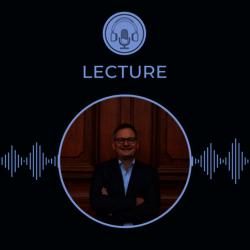 GHIL Podcast
GHIL Podcast

GHIL Joint Lecture
Philipp Gassert
Contesting Political Spaces
Thoughts on a World History of Street Protest
28 May 2025
(0:43 h)

GHIL Joint Lecture
Philipp Gassert
Contesting Political Spaces
Thoughts on a World History of Street Protest
In co-operation with the Modern German History Seminar, Institute of Historical Research (IHR)
Even though we now live in an age of digital media, physical street protest is not a thing of the past. Anyone knows that even in the twenty-first century, public, symbolically charged spaces continue to be occupied by protesters who hope to score political points. We may even be under the impression that the frequency of street protests has increased. So why does ‘taking to the streets’ still work, even though we can be so wonderfully outraged online today? The obvious answer is: it can be explained historically. I will take my examples from 250 years of history, covering a wide range of societies, issues, and geographical entities in order to present preliminary findings on an ongoing project about a world history of street protest.
Philipp Gassert teaches contemporary history in Mannheim. He has published widely on the history of the 1968 movements and the 1980s’ peace movements. In 2018 he published the first full-length monography on post-war German protest history Bewegte Gesellschaft: Deutsche Protestgeschichte seit 1945 (Stuttgart, 2018). He is currently writing a world history of street protest from the eighteenth century to the present.
Don't miss the accompanying interview: In this episode, host Kim König and Ole Münch, research fellow in modern history, talk to Professor Philipp Gassert, whose lecture at the German Historical Institute explored a compelling question: Why does street protests remain powerful in our digital age? Professor Gassert’s research examines 250 years of protest history in different societies and geographical contexts. His project aims to develop a historical framework for understanding why physically taking to the streets remains an effective form of political expression, even as digital platforms offer new avenues for dissent.